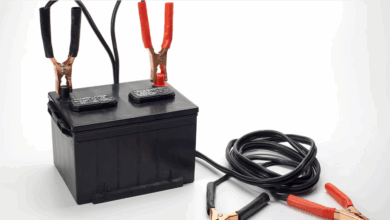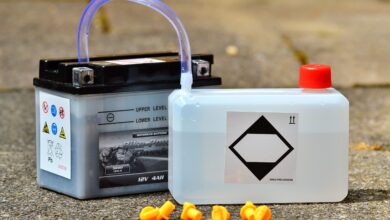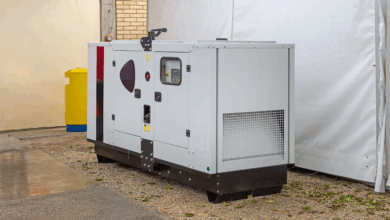Complete Bluetti EB150 Review

After several months of hands-on use, I can confidently say the Bluetti EB150 is an exceptional high-capacity portable power station ideal for off-grid adventures and home backup needs. It features a premium-grade lithium-ion battery, and its performance continues to impress.
Since its founding in 2009, MAXOAK has developed a reputation for crafting reliable power solutions with robust battery cells, solid build quality, and dependable performance. The EB150 lives up to that legacy.
For under $1000, this unit offers an impressive 1500Wh battery bank and a continuous output of 1000 watts. But don’t let that number fool you—this power station can handle more than just its rated load, as I’ll demonstrate later in this review.
One standout feature is its highly efficient MPPT charge controller, which ranks among the best in the market.
Unboxing the EB150
Here’s what comes in the box:
- MC4 to 7909 solar charging cables
- AC wall adapter and charging cord
- Comprehensive user manual
- Warranty registration card
Design and Build Quality of the Bluetti EB150
The EB150 is shaped like a compact PC tower or carry-on suitcase, with a sturdy top handle for portability. Its aluminum alloy casing ensures it’s rugged and built to last. No flimsy parts here.
Weighing approximately 17.2kg, it’s portable enough to move around and features large rubber feet that add stability and prevent sliding.
All controls, including output ports and power buttons, are located on the front-facing control panel. A detailed LCD screen shows battery status, input/output wattage, and other real-time data—everything you need at a glance.
Ports and Outputs on the Bluetti EB150
Here’s a breakdown of the available ports:
- 2 x 1000W AC outlets
- 3 x USB-A ports (3A)
- 1 x USB-C PD port (45W)
- 1 x 12V/9A car port
- 1 x Solar/DC input (16-60V, 10A)
- Independent AC & DC power switches
- Informative digital display
How to Charge the Bluetti EB150
The EB150 offers two methods of charging: via AC wall socket or through solar panels.
It’s a bit of a letdown that there’s no car charging option, especially since I often top off my power stations while driving. However, since I use this in my RV and as a home backup, the wall and solar options cover my current needs.
I’ve run several tests, both when I first got it and again after 6 months of usage. Here’s what I found:
Solar Charging Tests
This unit accepts up to 500W of solar input—a major advantage over its relatively slow 160W wall charger.
- First test: 327W solar input = Fully charged in 4.4 hours
- Second test: 489W input = Fully charged in 3.1 hours
- Recent test (after 6 months): 479W input = Fully charged in 3.2 hours
The built-in LCD provides accurate readings that match my external watt meter.
I don’t typically track charge times closely since I own several power stations and keep some charged at all times, but the EB150 performs consistently well.
We’ve also reviewed some of the best solar power stations on the market—check those out if you’re comparing options.
Wall Charging Test
Using the 160W AC adapter, a full charge from empty takes around 9 hours. This is why I usually reserve AC charging for cloudy days when solar isn’t an option.
Appliances the Bluetti EB150 Can Run
Here are a few real-world examples based on my usage:
| Appliance | Peak Power | Run Time |
| Laptop | – | 9 charges |
| Smartphone | – | 90 charges |
| Coffee Maker | 600W | 40 minutes |
| TV | – | 13 hours |
| Microwave | 1000W | 40 minutes |
| Mini Cooler | – | 15 hours |
| Full-size fridge | 1200W/200W | – |
| Incandescent lights | 300W | – |
If you need more power, take a look at the Bluetti EB240, which offers a larger battery for heavier demands.
Performance Review: Bluetti EB150
One thing that really stands out is the EB150’s ability to deliver pure sine wave power with excellent efficiency—close to 90% or higher in most tests.
With plenty of AC and DC outlets, it’s extremely convenient for campers, RVers, and anyone who needs to power multiple devices—phones, lights, laptops, coffee makers—all at once.
The 1500Wh battery means you could theoretically run a 500W appliance for 3 hours. Accounting for real-world losses, it still performs admirably.
In one of my camping trips, I ran a 520W load for 2.6 hours straight with no recharge. That’s impressive.
Also worth noting: unlike the Bluetti AC200P—which can lose up to 25% battery overnight under a small load—the EB150’s Battery Management System is far more efficient, making it a better pick for overnight use.
Competitor Comparison
- Goal Zero Yeti 1500X: Solid alternative but costs nearly double and uses older battery chemistry (fewer cycles). However, it offers better discharge consistency.
- Jackery Explorer 1500: Slightly lighter and more compact. Offers similar efficiency and capacity but may be less rugged in build.
Load Test Results
Before running the load test, I checked inverter efficiency.
- With a 1000W load, the EB150 lasted 3 minutes: input 1050-1100W, output 1005W. That’s ~95% efficiency.
- At 900W, it held for 1 hour and 15 minutes.
- Final measured inverter efficiency: 95.1%—outstanding.
During the load test, the unit handled 1010 watts (just over the rated 1000W limit) with no issues. It passed with flying colors.
Should You Buy the Bluetti EB150?
If you’re after a quiet, reliable, and solar-capable 1000W power solution for camping, off-grid use, or backup energy, the EB150 is a smart buy. Its powerful 1500Wh battery, 95% inverter efficiency, excellent solar input, and rugged design make it a dependable companion.
I highly recommend it for outdoor enthusiasts and RV users.
Pros
- Large 1500Wh battery with minimal idle discharge
- Inverter efficiency up to 95%
- Excellent for RVs, camping, and backup use
- Accepts up to 500W of solar input for fast charging
- Strong aluminum alloy exterior
- Compact, sturdy, and portable
Cons
- No car charging option
- Low surge power limit
- Customer support response time could be improved




![How to Bypass CO Sensor on Generator – [4-Step Safety Guide]](https://www.generator411.com/wp-content/uploads/2025/08/co-sensor-on-generator-390x220.png)